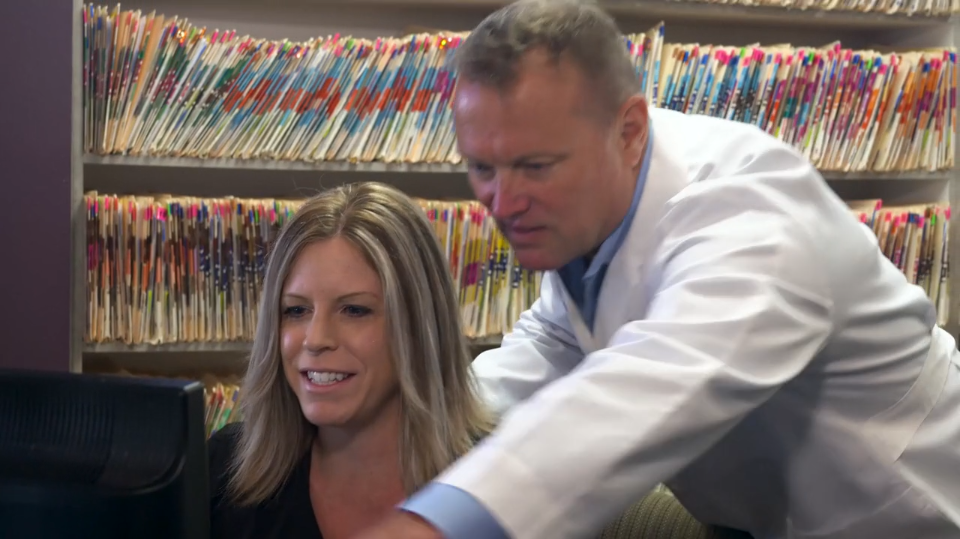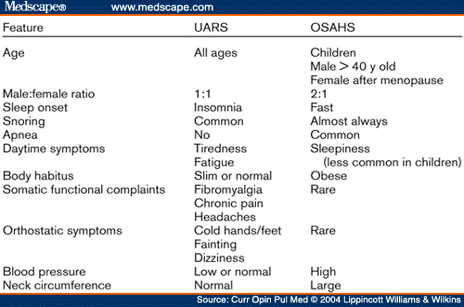E-DENTAL
Family & Cosmetic Dentistry


Sleep Disordered Breathing
Snoring – Sleep Apnea – Nasal Obstruction


Snoring & Sleep Apnea
Do you have trouble sleeping? If so, you’re not alone. An estimated 22 million Americans suffer from a lack of sleep – and even exhaustion – caused by sleep apnea. Chronic snoring problems and interrupted sleep aren’t just an inconvenience. Untreated sleep apnea can lead to more serious health risks. Sleep apnea is a common but serious sleep disorder that causes interruptions in breathing during sleep. These pauses in breathing are called apneas and they can happen hundreds of times each night. Sleep apnea can have a negative impact on your health and prevent you from getting the restful night’s sleep your body needs.
Potential Health Issues From Untreated Sleep Apnea
Continuously interrupted sleep can result in serious health-related problems. Potential health issues that may result from untreated sleep apnea include:
- Sudden death
- Heart attack
- Stroke
- High blood pressure
- Diabetes
- Obesity
- ADHD
- Dementia
- Depression
- Inability to concentrate
- Impaired memory
Common Symptoms
- Frequent, loud snoring
- Excessive daytime sleepiness
- Chronic exhaustion even after a full night’s sleep
- Gasping, choking or snorting during sleep
- Morning headaches
- Gastro Esophageal Reflux Disease (GERD)
- Insomnia
- High blood pressure
- Poor memory, moodiness or difficulty concentrating
- Waking up with a dry mouth or sore throat
The doctors at E-Dental feel so strongly that knowledge and action can improve and save lives that they are offering a no-cost individual 30 minute consultation on sleep breathing disorders. Whether it’s loud snoring or other sleep apnea symptoms, make sure you are not at risk for this very treatable, potentially life threatening condition. Learn more about sleep apnea and get all of your questions answered. We have a limited number of consultation times available, so schedule yours as soon as possible.

Upper Airway Resistance Syndrome
Upper airway resistance syndrome (UARS) is a condition that was first identified and described at Stanford University. Like obstructive sleep apnea (OSA) or (OSAHS), UARS results in the soft tissue of the throat relaxing and a reduction in the size of the airway-the main difference being that apneas (pauses in breathing) and hypopneas (decreasing in breathing) are absent or very low in patients with UARS. Patients with UARS require a greater effort in breathing to get past the narrowing or obstruction in their airways. The brain has to arouse itself from deeper stages of sleep to increase respiratory efforts.
The EEG arousals from sleep that UARS causes are called respiratory effort-related arousals” (RERAs). These RERAs are often undetected by the affected individual. When this scenario repeats throughout the night, sleep is impaired, just like in obstructive sleep apnea. However with UARS there is no obvious oxygen desaturation like with OSA, this often makes UARS difficult to detect.
UARS is best described on the spectrum as the progression from snoring towards OSA. However, the presentation of UARS is unique. Unlike OSA or OSAHS, UARS presents in women and men equally and can be found more in thin or normal body structured individuals.
The manifestations of UARS are varied but the most common symptoms are:
- Disturbed sleep with consequent daytime impairment, including excessive daytime sleepiness and frequent arousals from sleep
- Morning headaches
- Decreased concentration
- Headaches
- Difficulty with sleep onset and sleep maintenance (insomnia)
Recent research continues to recognize that the clinical features seen in UARS overlap with functional somatic syndromes such as chronic fatigue syndrome, fibromyalgia, irritable bowel syndrome (IBS), and chronic headache.
Even more recent, is the research linking temporomandibular joint (TMJ) syndrome to an underlying sleep problem, particularly UARS. It is also important to note, snoring is not a necessary feature of this syndrome.

As mentioned, UARS represents a progression of disease bridging the transition from “benign snoring” to obstructive sleep apnea. Patients simply do not go to bed normal one night, only to awaken the next morning with obstructive sleep apnea. Instead, they typically go through natural progression over time or following weight gain from “benign snoring”, to UARS, and finally to obstructive sleep apnea. This progression may take years or decades to occur.

Diagnosis
Diagnosis of UARS requires symptoms (excessive daytime somnolence, frag- mented sleep, fatigue), anatomic features consistent with upper airway narrowing, and supportive PSG findings. The measurement of esophageal pressure is the gold standard for measuring respiratory effort and is the only consistent measurement reported for the diagnosis of UARS.
Although these diagnostic measures must be ordered by a physician and read by a sleep doctor for a diagnosis, often it is a dentist who first notices signs and symptoms and screens for sleep disorders such as UARS. This is because of the relationship between the airway and facial and jaw development. At Rock Valley dental we can perform comprehensive airway evaluation with pulse oximeter screening if necessary to help your doctor identify any sleep disordered breathing disorders such as UARS that maybe impacting your life.
Treatment
Treatment for UARS is often similar to the treatments of OSA. However CPAP therapy maybe the last resort treatment option for UARS as compared to the “go-to” option for those suffering from severe OSA. It is important to talk to your sleep doctor about treatment options if you are diagnosed with UARS. Options often include:
Behavior and Lifestyle treatments-This may include practicing good sleep hygiene and making sleep a priority, getting adequate exercise, avoiding blue light and caffeine and or alcohol before bedtime, changing positions of sleep. Nasal cones and or mouth taping maybe an important step to decrease nasal resistance and improve oxygen levels in the body.
Oral Appliances– Dental appliances are often the first option for treating UARS. An oral sleep appliance is worn in the mouth only while you sleep and fits like a sports mouth guard or an orthodontic retainer. Oral appliances support your jaw in a forward position to keep the oral airway open. Oral appliances are quiet, portable and easy to care for. In 1995, the Task Force for the Standards of Practice Committee of the American Sleep Disorders Association recommended offering oral appliances to all non-apneic snorers. At E-Dental we can provide you with a sleep oral appliance that is effective and comfortable. Talk to us more about oral appliance options.
Surgery– Nasal airway anatomic issues such as a deviated septum, inferior turbinate hypertrophy, nasal valve collapse, or any combination, have been associated with UARS and may need to be evaluated.
At E-Dental, we believe that it is important to identify patients with UARS, not only because of the health risks associated with UARS, but especially because they may have a particularly higher risk of developing obstructive sleep apnea in the future. An important reason to treat UARS is to allow the patient to obtain a better quality of sleep. Opening the airway or decreasing the upper airway resistance can reduce the number of arousals during sleep, improve the ability to initiate or maintain sleep, lead to more refreshing sleep, and improve daytime alertness. Contact us today to learn more about UARS or if an oral appliance or other dental treatment options can benefit you if you have been diagnosed with UARS.
DNA and MRNA
DNA and MRNA Appliance Systems – A cure for snoring and mild to moderate sleep apnea
Many health and dental problems exist as a result of altered craniofacial growth. Our environment influences us from the moment we are conceived (epigenetics) and this can play a role in how we develop as a fetus, as a child and into adulthood. When the craniofacial structures do not grow to their full potential many things can happen including:
- Recessed maxilla and/or mandible
- High and narrow palate
- Dental crowding
- Gummy smiles
- Restricted airways
In the past, surgery was the answer for most of the above complications. But, with current research and new modalities we have the ability to alter/grow adult bone to reach a healthy end result. The DNA and MRNA appliance systems are the answer for teenagers and adults who are suffering from a lack of craniofacial growth.
The DNA Appliance System
The Vivos DNA System represents a breakthrough treatment proven to easily, painlessly, and naturally remodel, reposition, and redevelop the anatomy that surrounds the head and neck including the upper and lower jaw and airway.
The Vivos DNA appliance is a FDA registered Biomimetic (mimicking nature) oral appliance, which harnesses the body’s natural ability for self-correction through gene environmental interactions by using developmental mechanisms that are encoded at the level of the human genome.
The Vivos DNA appliance system aims to put the body back into it’s correct developmental path. This makes this system unique in upper airway, orthodontic and craniofacial correction. Unlike traditional braces, the Vivos DNA appliance is not worn all the time. The appliance is only worn in the early evening and all night while asleep.
The Vivos DNA System:
- Restores and helps maintain proper symmetry and alignment
- Promotes craniofacial and orthodontic correction
- Gives a broader, wider smile with improved esthetics
- A solution for crowded or crooked teeth, gummy smiles, narrow palates, TMD, sleep bruxism and Obstructive Sleep Apnea (OSA)
- Allows for higher quantity and quality of sleep
- Can drastically reduce or even eliminate snoring
- Promotes a more beautiful, symmetrical and attractive face “a DNA facelift”
- Restore normal breathing and sleep patterns which improve overall health
- Reduce or eliminate the need for other lifetime treatment options
The Vivos DNA appliance system has been clinically proven to treat and in some cases cure Obstructive Sleep Apnea, it does this through non-surgical remodeling of the upper airway. The biomimetic design of the Vivos DNA appliance results in more than just tooth movement. As the teeth move during treatment the bone structures within the face also change and grow.
As the jaws grow into their fully developed form the rest of the facial structures are also signaled. This gives the face a better, more natural support system and may result in increased facial symmetry. Patients report improved overall facial esthetics, almost like a natural facelift without the pain or toxins associated with other cosmetic therapies.
The MRNA Appliance System
A common dental treatment for Obstructive Sleep Apnea (OSA) is a mandibular advancement device (MAD). A mandibular advancement device is worn at night and brings the lower jaw forward which lifts the tissues off of the airway and thus improves sleep.
While MAD are successful to a degree there are drawbacks in that these devices can cause bite discrepancies as well as TMJ problems and pain. Also, research now shows that with prolonged use of splints such as CPAP AND MAD, sleep apnea worsens with time. The MRNA appliance is FDA cleared for the treatment of mild to moderate obstructive sleep apnea.
The MRNA appliance is similar to the more traditional MAD appliances in that if brings the lower jaw forward, however is differs in that as the lower jaw is being held forward the upper jaw is being stimulated to grow which remodels the airway. In this way, the MRNA is not just a splint, it is a potential cure for OSA. The MRNA, like the DNA, is only worn in the evening and at night.
These appliance systems, the DNA and MRNA, are easy to wear, do not cause any forceful movements or pain and patients see results within weeks of wearing the device. If you suffer from snoring, sleep apnea, constricted dental arches including high narrow palate, dental crowding, or a gummy smile, please call us today for a free consultation and learn more about the DNA and or MRNA system.
Complete the form below and one of our staff will contact you to confirm




